Marrakesh is famous for its souqs and for Jemaa el-Fna, the big square where every night performers show their talent and street food is at its best, but there are many other things to see in this magic city. If you know where to look, you'll find ancient palaces and buildings straight out of Arabian Nights, the classic collection of tales set in a harem. If you liked Granada's Alhambra, or Istanbul's Topkapi Palace, a visit to some of these treasures is almost compulsory.
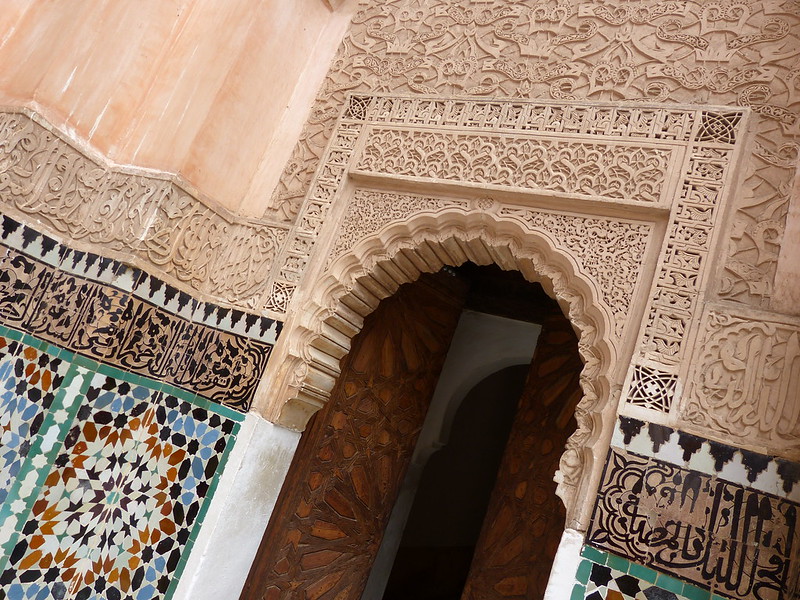 |
| Medersa Ali Ben Youssef |
I fell in love with Islamic and Mudejar architecture during a visit to Andalusia, in southern Spain, a few years ago. The whole of Córdoba but also the Alcázar in Seville are excellent reminders of the Arabic domination of this region of Spain. Horseshoe arches, really impressive decorative tilework, peaceful and shady courtyards with pigeon fountains in the middle are the main features of this colourful traditional style.
I won't lie: I was trying to get to Medersa Ali Ben Youssef, but I must have taken a wrong turn or two, because I ended up in front of Bahia Palace. After having managed to get my 50-dirham banknote changed in smaller denominations, I set out to explore the palace. Most of the people I saw were in a group, and had a tour guide. I was alone, so I didn't get a tour guide, but I overheard the guides explaining something about the palace in several languages, Italian included, and I decided that I was fine by myself.
In the courtyard of the palace there are many cats and kittens, some of them with patchy fur, and I couldn't help listening to a tour guide explaining in French that the stray cats were introduced by the dozen in Marrakesh because there were many rats. Now that the rat situation has improved the cats are still here!
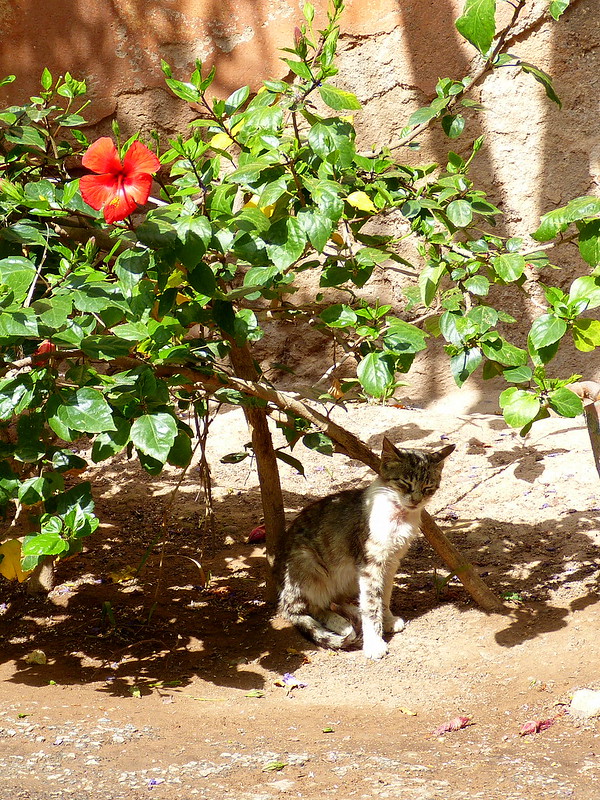 |
| A cat in the courtyard of Bahia Palace |
This is not the royal palace, as that is off limits for tourists. Built at the end of 19th century for the private use of a grand vizier - a sort of Prime Minister to the Sultan - Palace Bahia was later embellished by a black slave turned vizier, Abu 'Bou' Ahmed. It has a harem, and courtyards intended to impress the dignitaries who came to visit. The word Bahia itself means 'beautiful' or 'brilliant'.
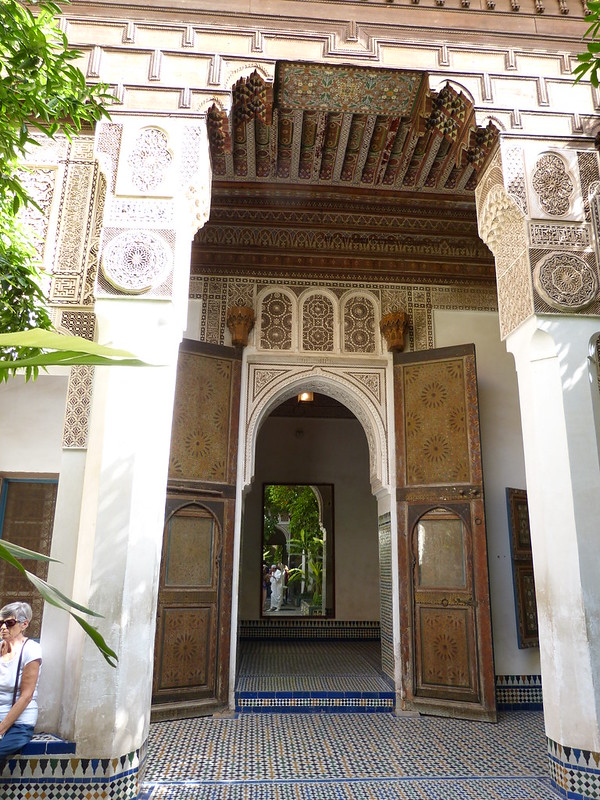 |
| Bahia Palace |
I spent my time with my mouth agape, literally trying to take in as much beauty as I could. There is a harsh contrast between the hustle and bustle of the streets of the medina of Marrakesh - full of dust and carts, chaos and foul smells - and this relaxing ambience, where only the twitters of the birds and the murmur of the water in the fountains are heard. The typical zellij, the mosaic decorations set to form geometric motifs, are everywhere, and they call for your attention.
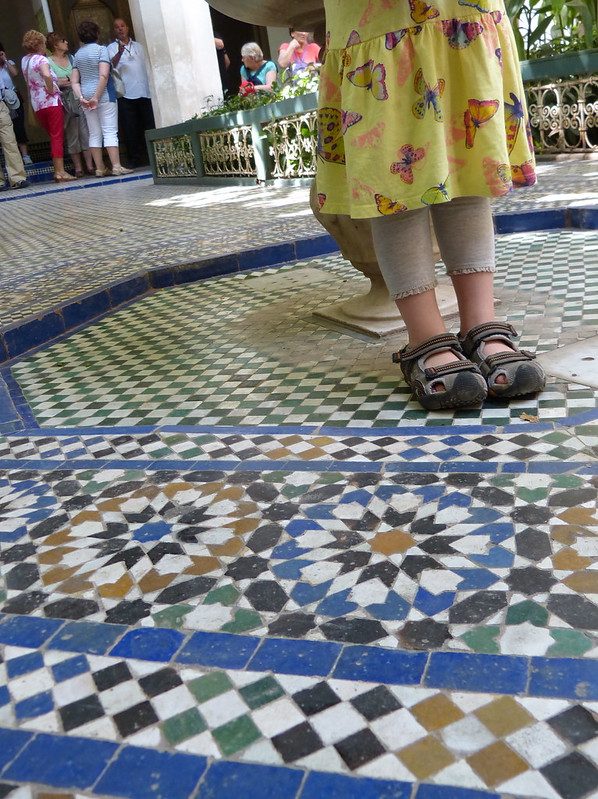 |
| A child inside Palace Bahia, next to some zellij |
 |
| A detail of Palace Bahia |
After visiting this palace, I ran into Museum Dar Si Said completely by chance. I read on my guide that the palace alone was worth visiting, and for an entrance fee of something like 10 dirhams (€0,90), I decided to enter. The museum hosts examples of Moroccan handicrafts, from daggers to carved wooden doors. There are also some photos of Moroccan women from different tribes. Overall, a visit to this museum is more pleasant for the decorations of the ceilings in the second floor and for the peaceful central courtyard rather than for what is exposed.
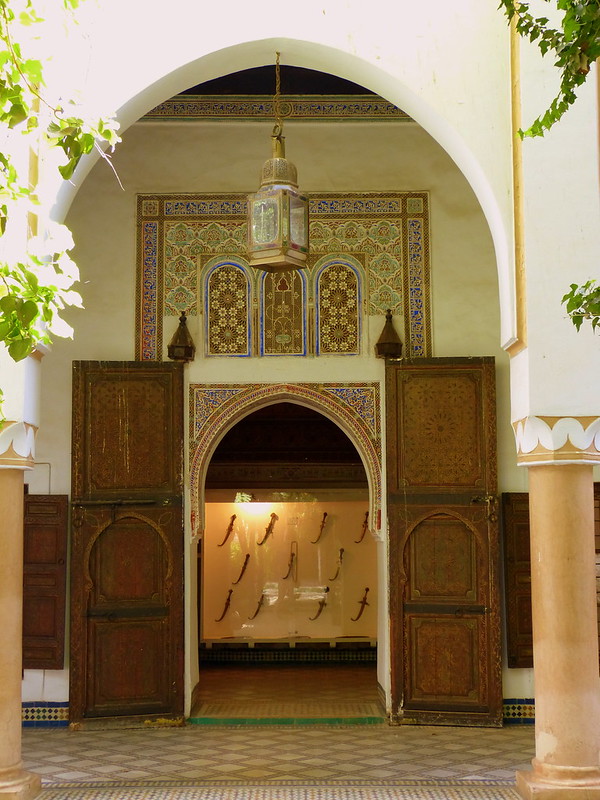 |
| Museum Dar Si Said |
I had seen pictures of Medersa Ben Youssef before leaving for Morocco, so it was on my list of places to look for. If you have plans to do some serious sightseeing while in Marrakesh, bear in mind that it's not so easy to find the points of interest mentioned in your guidebook. I wasn't able to find the Saadian Tombs, for instance! Between the labyrinthine streets and the fact that there are no street signs whatsoever, I had to trust my sense of direction. In order to find the medersa, for example, I ended up following a German tour group that was clearly directed there.
This is probably the most beautiful example of Islamic architecture in Marrakesh. A medersa (or madrasa) was a religious school - a sort of university in the past - where students lived as well as studied, as in a boarding school nowadays. In this 16th century building there is a central pool for ablutions in the stunning central courtyard, as well as the rooms for the students on the second floor, all of them with their own balconies and smaller courtyards.
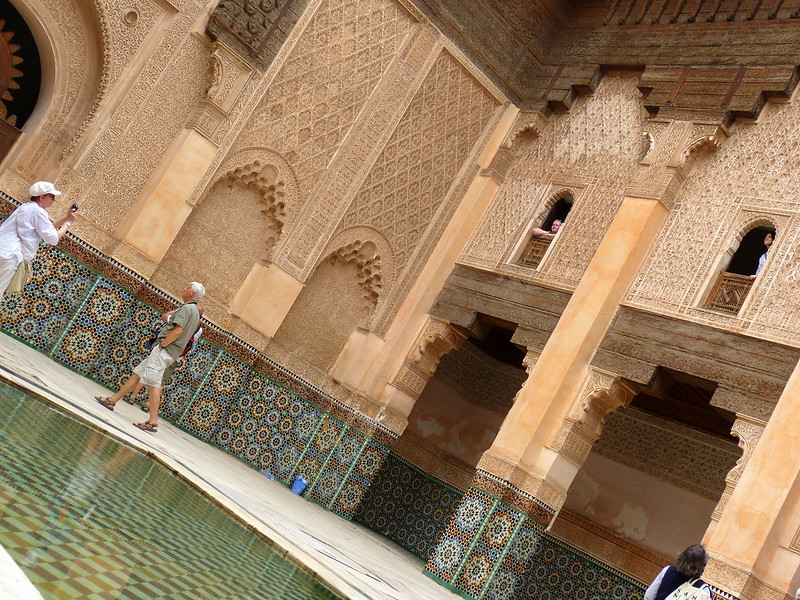 |
| The central pool of the medersa |
As I had already visited a museum that day, and it revealed to be worth it solely for the building, I only bought the ticket for the medersa. On hindsight, I could have given the museum a chance. I spent a long time snapping pictures at the medersa, waiting for tour groups to go away, and trying to find better angles for my pictures.
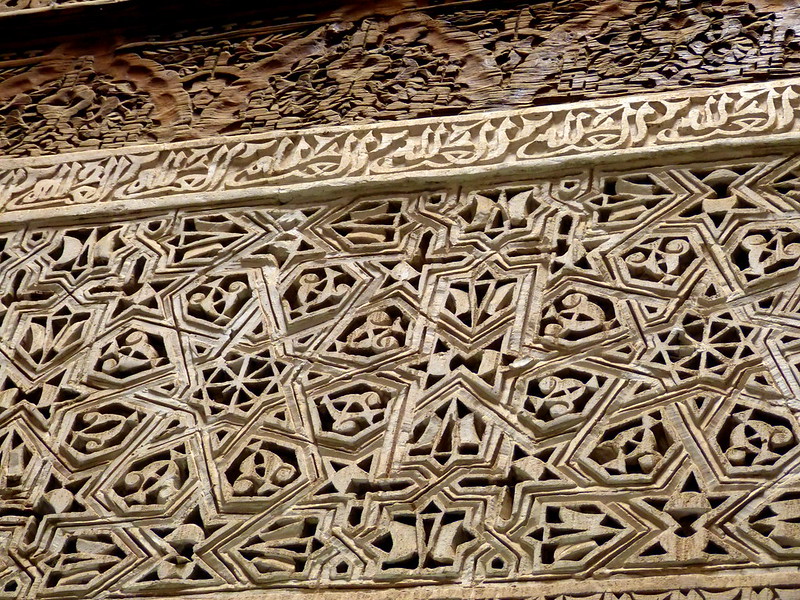 |
| Detail of Medersa Ben Youssef |
 |
| The internal courtyards on the second floor, where the students' rooms are |
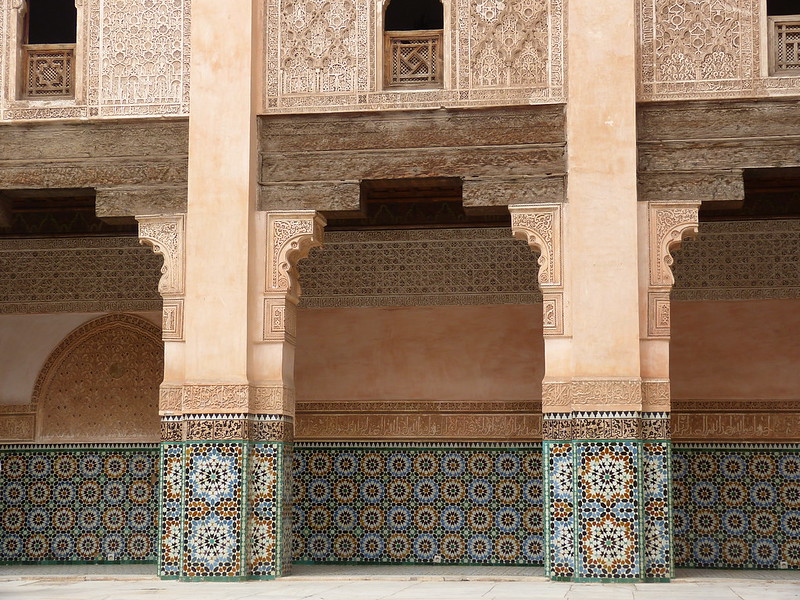 |
| Another detail of the medersa |
If you fancy something more modern but still fascinating, head to Majorelle Garden in the Ville Nouvelle, the newer part of the city. The laying out of gardens is maybe not considered architecture per se, but in Islamic countries it probably should, because of all the pavilions and internal courtyards that are such an important part of private and public buildings in this part of the world.
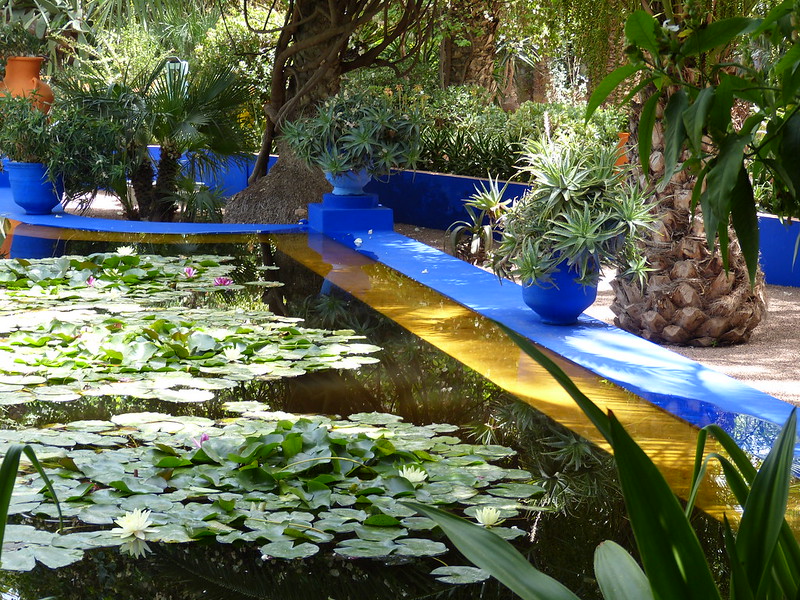 |
| One of the pools in Majorelle Garden |
These botanical gardens are an ideal place to escape the heat of the city, shady and beautiful, with many exotic plants such as cactuses from many different parts of the world. They were created by Jacques Majorelle, a French artist, and then bought by Yves Saint Laurent, the famous designer, in 1980. They are not very big, but they don't lack in charm. They feature big colourful vases, a bamboo grove, and several pathways. The entrance fee is 50 dirhams (€4,45) without the museum, and 25 dirhams more if you also want to see the small museum dedicated to Islamic art.
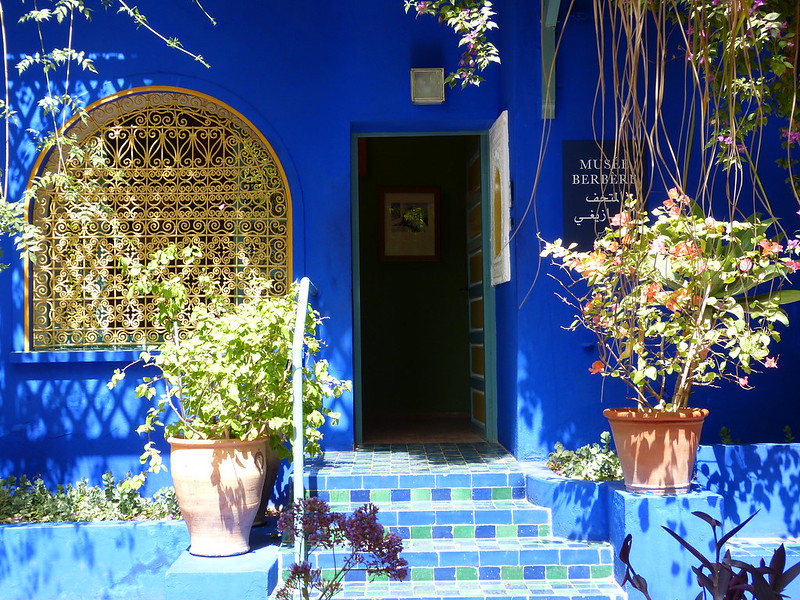 |
| The Berber Museum inside Majorelle Garden |
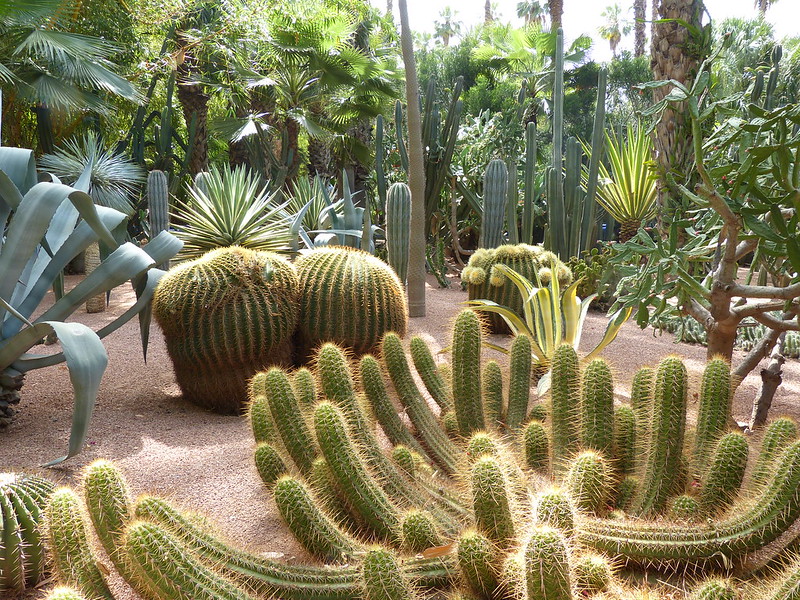 |
| The cactuses in Majorelle Garden |
There is more sightseeing to be done in Marrakesh: the ruins of Palace El Badi, the Menara Gardens and the Museum of Marrakesh, for instance, but after getting lost twice in the same day I decided I had done enough of it, and dedicated my second full day to the cooking class, and taking a taxi to the new town on the afternoon.













I can see why you fell in love with the architecture! It's simply stunning. Thanks for sharing!
ReplyDeleteHappy travels :)
Wow your pictures are great and Marrakesh looks astounding!
ReplyDeleteI especially like the cat one, so cute :)
The Madrasa Ben Youssef is so beautiful. But it took long hours of wandering in the hot sunny labyrinth of the medina to get there. It was quite an adventure for me. It's so deep in there...
ReplyDeleteAnd getting out, finding the Jemaa El Fna was again an adventure :)
Yes, I know. I got lost coming back, but it was so worth it, it's my favourite sight in Marrakesh!
Delete